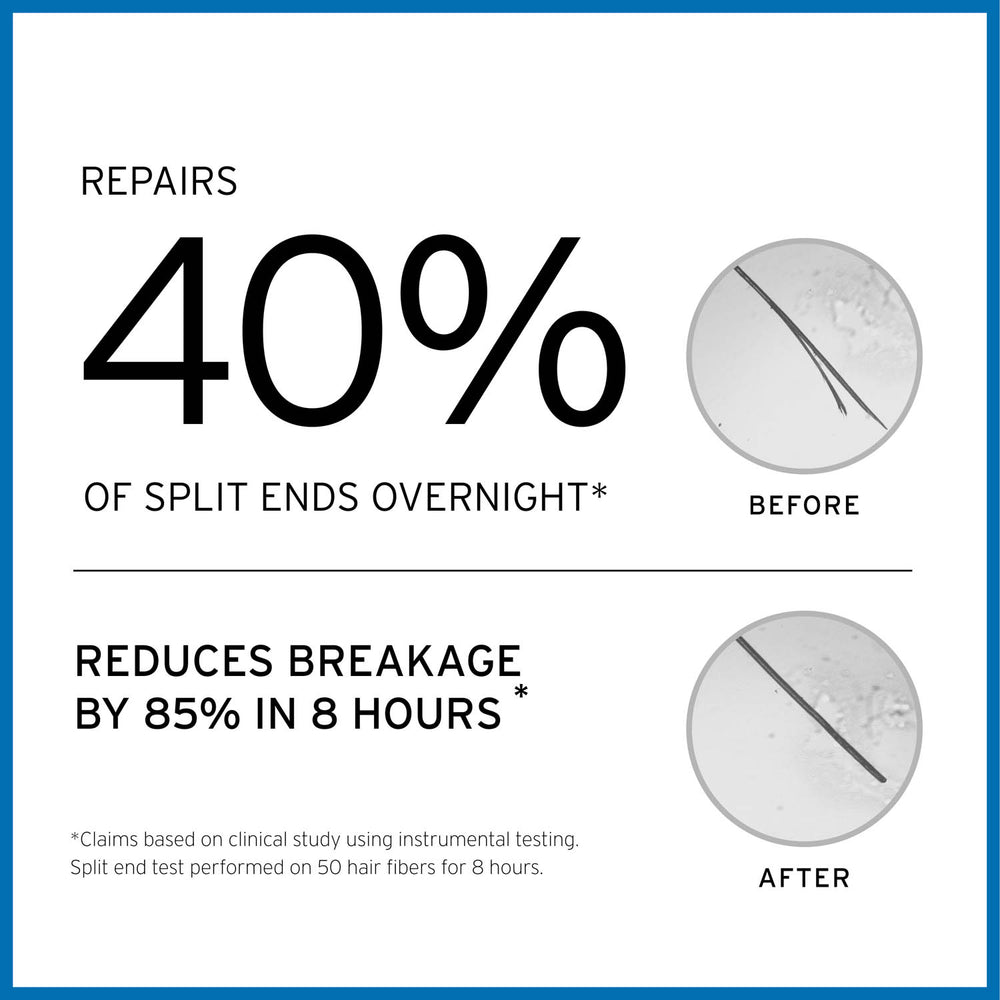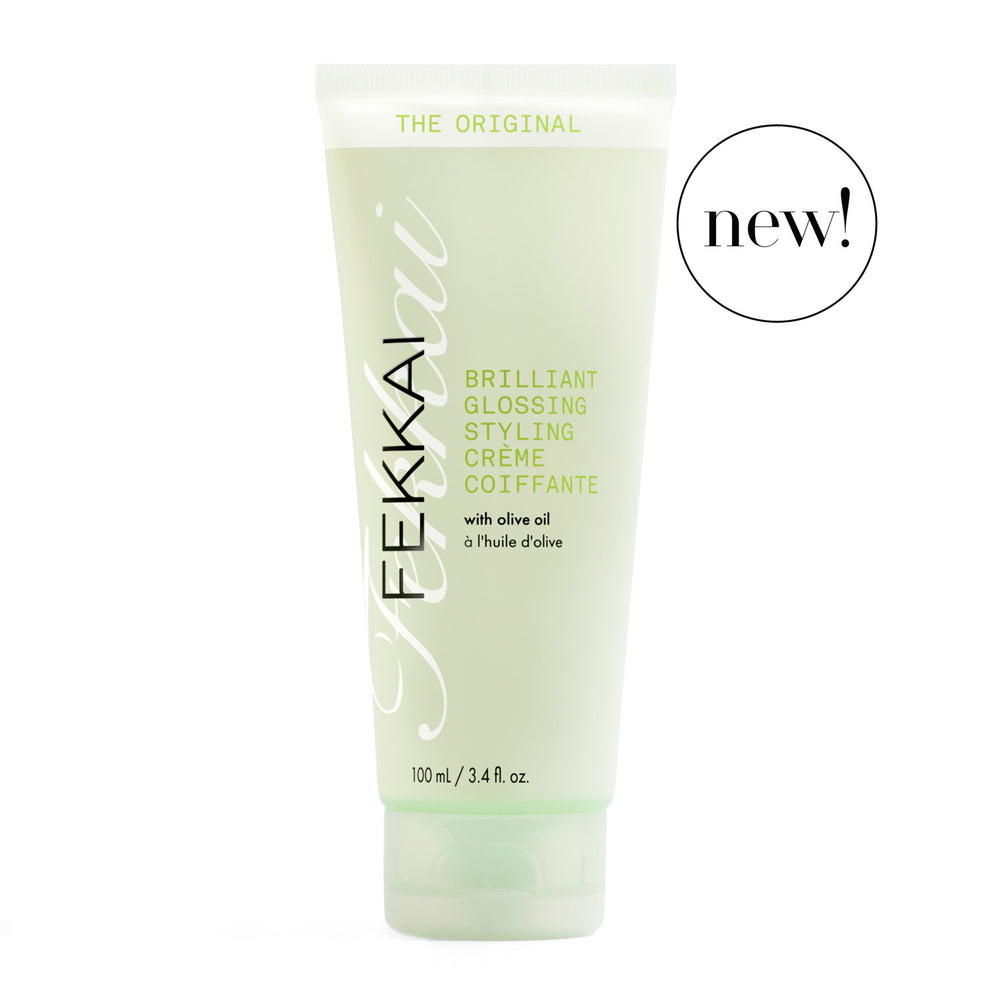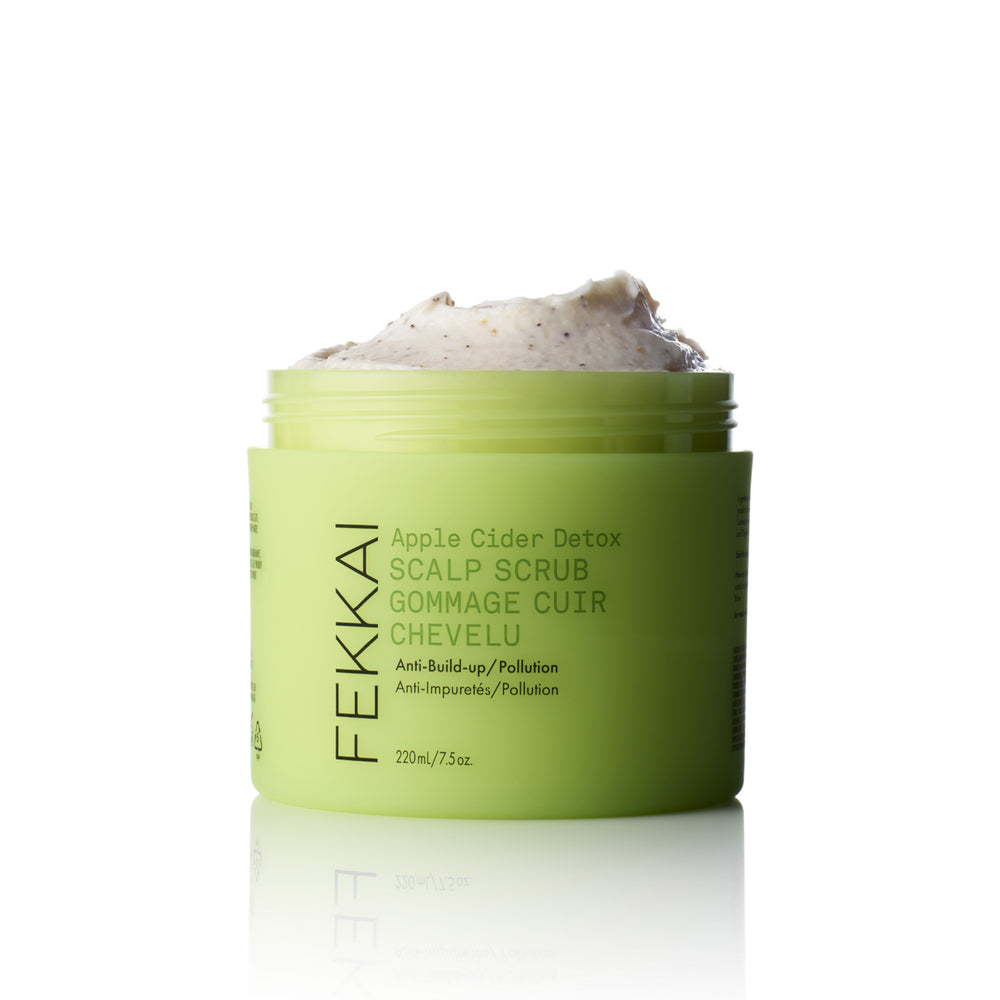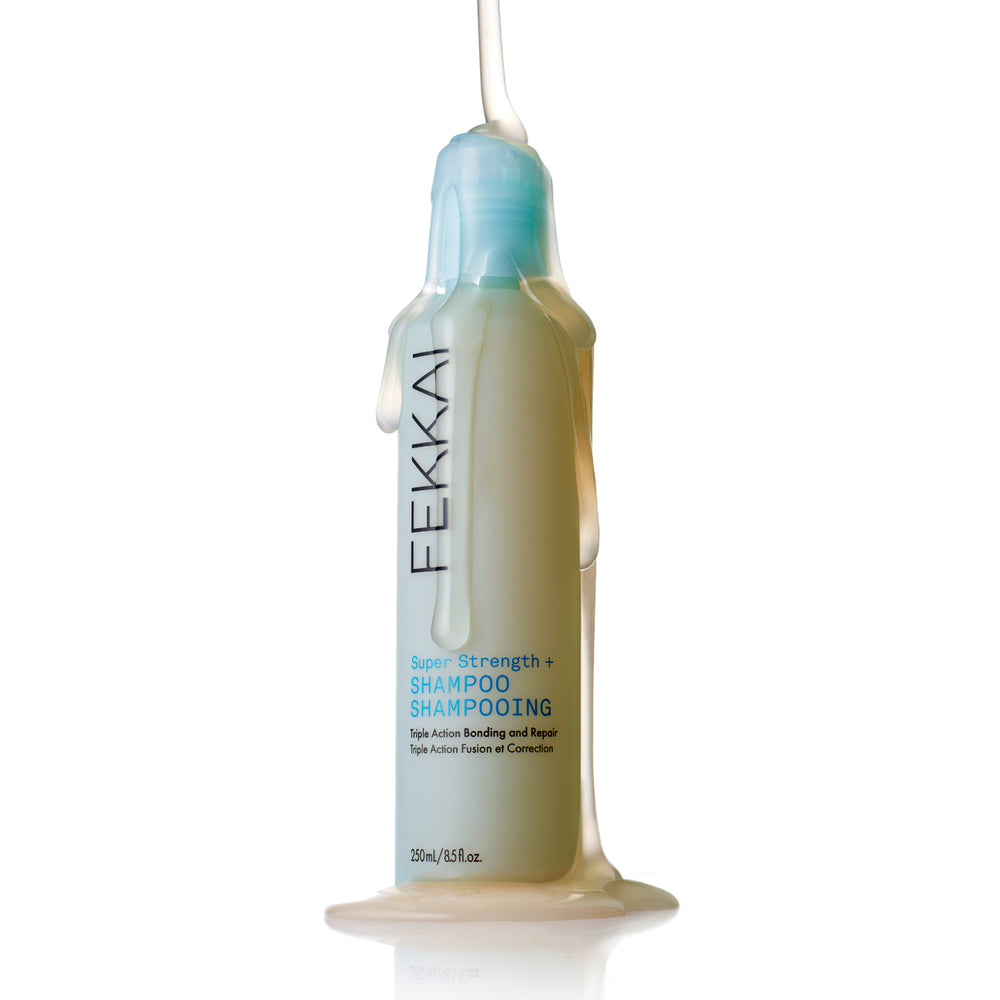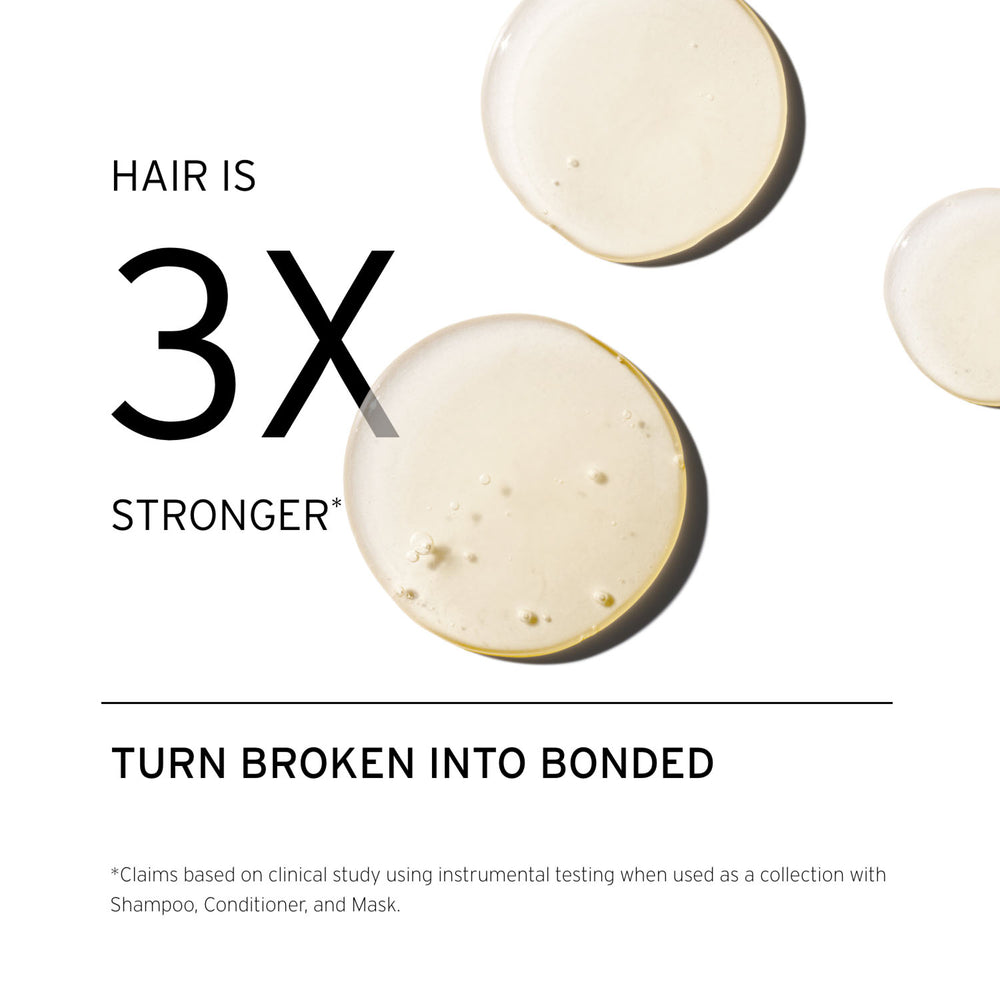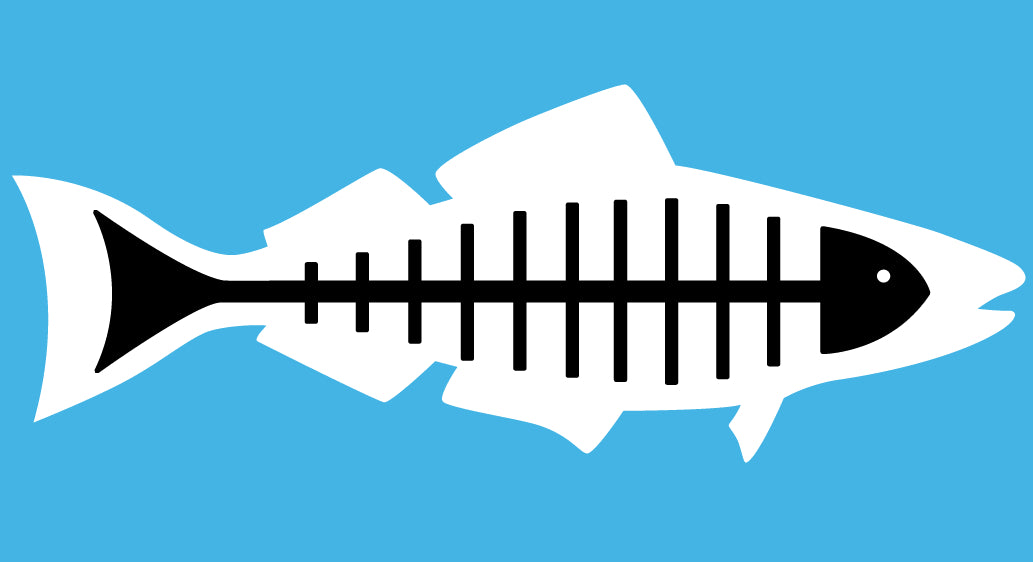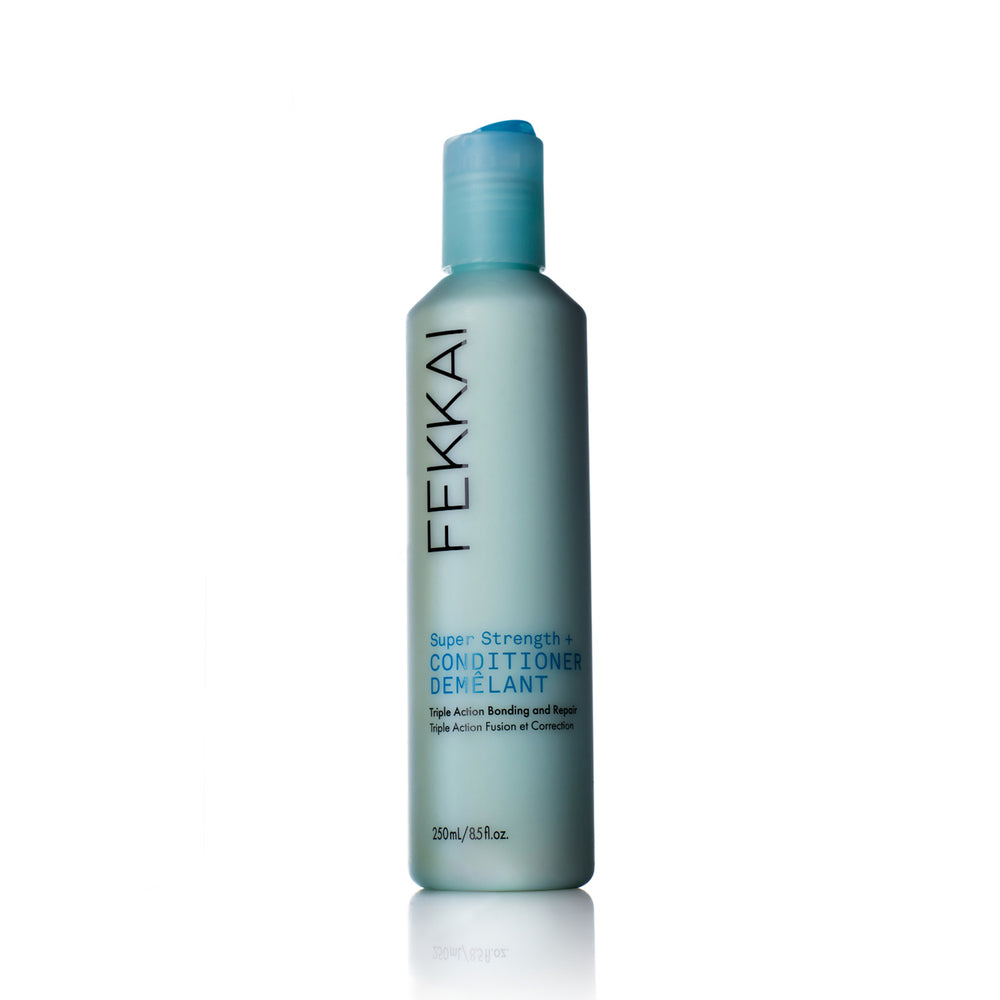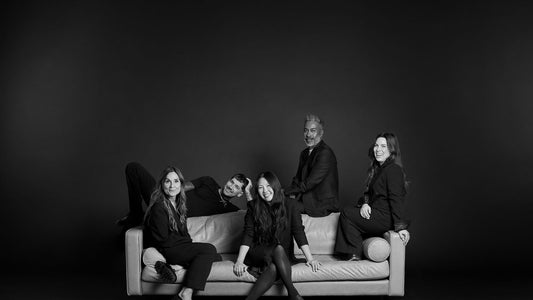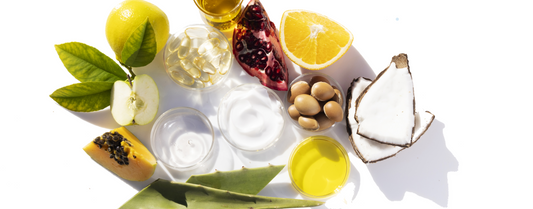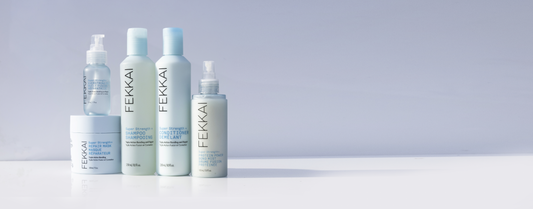I am a celebrity hairstylist, an entrepreneur, and a philanthropist who’s built my brand on taking care of others, body, hair, and soul. Join me weekly for The FEKKAI Life, a series of relaxed, intimate conversations with free thinkers, business leaders, and creatives who’ve used their passion to change the world for the better. Available wherever you find your podcasts.
SL: Hi, I'm Shelley Luce. I'm the president and CEO of Heal the Bay and we fight for clean water everywhere. Clean living means to me that I can have fresh air. I can have clean water. I can have pure materials around me and on me and I can talk and feel positive about myself, the people around me, and our future.
FF: Hi, I'm Frédéric Fekkai. And this is The FEKKAI Life. I'm recording from my home in upstate New York during this time, I hope you and those close to you are healthy and safe. Coming up, you will hear from someone amazing: Heal the Bay CEO Dr. Shelley Luce. We sat down together in Santa Monica to talk about the path that led her to conservation and what we should all know about advocating for keeping our oceans clean.
FF: Good afternoon. I'm so happy to meet you, Dr. Shelley Luce.
SL: Thank you, likewise.
FF: So Shelley, I'm very curious. I'm so, first of all, delighted to meet you, but very curious about your whole journey. And you are the President and the Chief Executive Officer of Heal the Bay. I'm very curious before we start, I mean, when did you start having this interest, this passion about the environment and the water?
SL: I don't know when I started because it's as long as I can remember. We always were a family that enjoyed the outdoors and when I was a teenager, when I was in ninth grade, my family moved to the island of Bermuda, which is a tiny island 20 miles long, one mile wide. It's about 500 miles off the coast of the United States in the Atlantic Ocean, so it's quite remote. It has no local source of fresh water other than the rain that falls on the island. So everybody captures their own rainwater, stores it, and lives off of that throughout the year. And of course, it's surrounded by beautiful blue Atlantic waters, beautiful coral reefs, pink sand beaches. It's an incredible place. So of course there I was never far from the ocean and I was in the ocean all the time. I learned to scuba dive. I became a good ocean swimmer and I just was passionate about about everything in and on the ocean from that day on.
FF: Wonderful. Do you want to give a little bit of a background on Heal the Bay?
SL: Heal the Bay is an environmental group. We're a an NGO, a nonprofit here based in Santa Monica. This is our 35th year, it's our 35th anniversary. So we've been around for a long time, we have a huge track record of keeping our waters clean, making our waters cleaner. We were formed by a local group of activists led by an incredible woman named Dorothy Green, and she and others fought to force our city of Los Angeles to clean up the discharge from a sewage treatment plant. We have a sewage treatment plant here called Hyperion. It's actually an incredible feat of engineering. It treats wastewater from more than four million people, 24 hours a day, seven days a week. Wow. So that's a lot of material and back in the day, back in the '80s, it was only doing a partial treatment. It was screening out solids and everything else was going straight to the bay. And that caused a lack of oxygen in the water. So of course, nothing could live. So there was a large dead zone right off the coast of Santa Monica in Los Angeles here, and the water was not cleaned for swimming. It was full of bacteria and viruses from sewage. So people were getting sick from swimming right here in the United States.
FF: When was that?
SL: This was in the '80s and the decades leading up to the '80s. In the '80s, Dorothy Green and her friends and colleagues formed Heal the Bay. They did incredible public education work, and they led an advocacy campaign and a lawsuit that eventually forced the city of Los Angeles to upgrade that treatment plan. So in the 1990s, the treatment plant upgraded to full treatment of wastewater and now it is only clean water coming out of that pipe into Santa Monica Bay. And when I meet people who grew up in Los Angeles who've been here for a long time, and I tell them that I work with Heal the Bay. So many people tell me, "Oh, the bay is so much cleaner now than when I was a kid in the '60s, in the '70s, in the '80s. So that's a great legacy. That's where we come from.
FF: So today, the water treatment is up to your standard?
SL: Yes, today, the treatment of our sewage and our wastewater is definitely up to our standards. It's a high standard. We have a new problem. And that is the water that runs off of our streets is not treated. That's when it rains, water flows from the rooftops and the sidewalks and the roads, into our rivers and out to our ocean and that's the now the biggest source of pollution to our coastal waters. Another issue that's tied to this is that the wastewater now that is treated very well and sent out through a pipe, there's a lot of it: 200 million gallons a day.
FF: Are you serious?
SL: Yeah. And it comes from faraway, we bring water from rivers elsewhere in California. Here we use it maybe once, wash our dishes, brush our teeth, have a shower, go to the restroom, and then we treat it and send it out to the ocean. So it's a very strange linear movement of water from this ecosystem far away to here. So the next step is to treat that water even better, so we can drink it. We need to recycle our wastewater and use it again locally, and then it will become the largest source of local water supply for our city and the city actually announced in 2019 their plan to do exactly that.
FF: That was my question. So there's a plan. Great. That's good.
SL: Yeah, it's really good.
FF: So many people want to give back but so few have it as an entire career path like you. I mean, impressive. What path led you to become the CEO of Heal the Bay?
SL: I feel so fortunate that I have worked my whole career as a scientist in the nonprofit world, giving back and defending clean water and trying to keep people and wildlife safe and healthy. I'm really, really gratified that that's how I get to use my science and my skills. And it really happened here in Los Angeles. I came here to do my PhD at UCLA, wonderful program in environmental science and engineering. And while I was there, I was recruited by Heal the Bay. I had not heard of Heal the Bay, I might have been the only person in LA at that time who had not heard of Heal the Bay because I was quite new to the city. And I learned something about the organization. I saw how they worked and I took the job. I was able to work as a staff scientist at Heal the Bay while I did my dissertation research and that is one of the keys to Heal the Bay's success. We're very science-based organization but we are also very strong advocates and activists. So it's really special, I think that we get to do science and be scientists and then we base our advocacy on really good science. So I started here in the early 2000s, as a staff scientist, and I learned how to make a difference in the environment. About four or five years later, I left Heal the Bay and I worked at a couple of other environmental organizations, all based in the Los Angeles area. And then, almost three years ago, I got to come back to Heal the Bay as the CEO and it's really a dream job for me. feels great.
FF: On that point, how does anyone know about Heal the Bay? In our business, obviously, the most concerning thing is about brand awareness. First question is how does anyone know about Heal the Bay? And do you get the support you want? Not from the government, per se, but also from the community? Is anyone really supporting?
SL: Yes, thousands of people are supporting Heal the Bay. The vast majority of our funding comes from individuals, private foundations and corporations, not from the government. We work with government agencies in a couple different ways. Sometimes we're hand-in-hand making good things happen and sometimes we are poking them and pushing them and sometimes in the past, even suing them to force government agencies to do a better job of keeping our water clean. But most of our support comes from individuals and that's a really exciting thing for me to to look at. And really, it has a lot to do with branding. So one of the similarities between Heal the Bay and other nonprofits, one of the similarities we have with the for-profit corporate world, is that branding is important, image is important, reaching people is really important. So we work very hard to make sure that we get our names out there. We have a really great logo. I don't know if you've seen it, I'll show it to you. It's black and white fish bones in a blue square. I'm sure you've seen it. It shows up in amazing places. I was in a coffee shop, downtown Los Angeles. It's very new. It's all white. Everything's gleaming clear white, it looks like the inside of a Mac store. And on the wall beside sort of a light switch panel thing was my organization's bright blue fish bone sticker. It was the only thing on the wall in the entire coffee shop. So I feel that our brand and our logo are really well known and they're kind of cool, you know, they they fit with the beach culture and the skateboard culture and the snowboard culture of southern California. And I do think that helps us. At the same time, we have a great reputation and very high credibility so I don't know if this is a real marketing term or not, but I call our brand a "halo brand," because anybody would want to be associated with Heal the Bay's brand.
FF: Great. Well, on that note, you know, many of us take clean water for granted, but Heal the Bay serves many kinds of communities. What have you learned about sustainability affecting all income levels, backgrounds, and geographic neighborhoods?
SL: Well, we have learned that everybody cares about clean water. We know that in fact, low income communities and communities of color vote more consistently for environmental protection than any other communities in the United States. National studies show that. We see low income communities throughout California impacted when we don't take care of our water. There are cities in the county of Los Angeles where it's not always safe to drink the tap water, or the tap water comes out brown. Maybe it's not toxic, but nobody should be drinking or wondering and feeling scared about their tap water. And that does happen here in Los Angeles, and in other parts of California. Our taps have dried up. There are communities in the Central Valley agricultural region of California where we drew down our groundwater so far, that city wells were no longer reaching the groundwater. And there was no water coming out people's taps. So the local authorities had to bring crates of bottled water to each home every week and put porta potties on the street and families were sharing a porta potty on the street. And this went on for many months. It was a crisis in California. It was not long ago, just a couple of years ago. So it's affecting communities all up and down this otherwise very wealthy and beautiful state all the time and it's something that Heal the Bay takes very seriously.
FF: So how does anyone measure in their home, in the area? Is it easy to access the level of cleanness of water? Is there an app or something? Because that would be interesting.
SL: I don't know if there's an app, that would be really interesting. What I do, I live in the city of Los Angeles and I get a written report mailed to me every year. Everybody does from the city water agency, which is called LA Department of Water and Power. Our water agency is part of the city. So they follow very strict rules. Their goal is not to make a profit, it is to provide clean water at a low cost. And I think they do a good job of it. There are other cities within LA County and within the state of California, where water is privatized, and so they may not be as transparent. However, they still have to meet state rules and regulations about the quality of the water. So I feel confident anywhere in California drinking the tap water unless I'm in one of these agricultural regions or one of these areas where the infrastructure has not been cared for and we see that the water is coming out with discoloration.
FF: You know, Heal the Bay. First of all, I have to congratulate you. I don't know who came up with this name, but it is a beautiful name. It evokes a lot of emotion. Not just cleaning the bay, but actually healing it. What does the name bring up for you?
SL: I agree. It's a beautiful name. I love it. And to me, healing is what we need for our bay right here, our entire ocean, and really our whole planet. We were talking earlier about plastics. This is just one of the ways in which I feel we have so gravely injured our planet, all of our natural systems that support us living here, and that we need to heal. So we are always working on healing our coastal waters and our watersheds, our rivers here in Los Angeles County. And now we are working to ban plastics, to ban that tide of litter that we see in our oceans and in our streets as one way of healing our ocean and our planet. I agree with you. That's a very meaningful word and I believe it attracts people to us into our mission because everybody wants healing.
FF: How does Heal the Bay and you every day live up to healing our bodies of water?
SL: Oh my gosh, there's so many things we all have to do. I personally am working really hard to stop using plastic in every way I can. It's difficult because so much around us is made of plastic. But starting with the single-use disposable plastic, we're just not doing it anymore. If I'm out somewhere and I want a coffee and I didn't bring a mug, I can't get a coffee or I have to go to a place that will give me ceramic. So I'm making commitments for myself. Heal the Bay also is going zero waste. On a bigger scale we are working to ban the use of the worst culprits of the single-use plastic, the stuff that we find in our beach cleanups. Heal the Bay is really well known for our beach cleanups. We've been doing them for decades, and we've picked up our two millionth piece of trash in the last couple of years. Hundreds of thousands of pounds of trash.
FF: Congratulations. That's fantastic.
SL: Yes, thank you. I'm happy that we were able to keep it out of the ocean, but we know that's a tiny fraction of the trash that's out there, of the plastic that's out there. So Heal the Bay is working to put a ban in place maybe similar to what has already been passed in the EU, the directive in the EU, we would like to see it for LA County and then for the state of California. LA County has more than 10 million people. It's larger than many countries, larger than most states in the United States. When we make a change in LA County, it has a big effect. We banned plastic bags at the supermarkets in LA County. And pretty soon the whole state did it. Because these big supermarkets don't want to have something in LA County and something else everywhere else. So we want to make these changes here in LA County as very powerful effect, then California, then hopefully beyond that we can catch up to the European Union on on the trash ban. So that's one really important way of doing it. And the other work that we do is educating people about that stormwater runoff that we talked about and how to conserve that water, keep it here on our land, capture it, use it, and only let it go out to the bay once it's been cleaned so we can heal our ocean waters.
FF: That's great that you talk about education. Do you have any involvement about supporting the education system? The school? Are they also participating? Are they aware? Are they concerned? Is there any program is to educate them, to motivate them, I would say, to make this environment a cleaner environment?
SL: Yes, well, you know, kids care, and you know, kids are aware. So the way that we work with them is we have worked with the state to require better environmental education in the schools. It's called the environmental education initiative and it's exciting because it passed in the early 2000s I believe and it requires our schools to incorporate environmental learning throughout their curriculum. And I saw it happen I saw my kids coming home with their math homework is talking about how many pieces could be recycled and how many, you know, they were talking about electric cars and energy and that kind of thing in their math and in their social studies. So it's really becoming much more integrated into the curriculum. So that's exciting. And then we at Heal the Bay have two ways of reaching students throughout LA County. One is through speakers that we send to schools. We have these incredible speakers, very passionate, who go out and they talk about all of these issues in ways that kids can understand at any level and they really engage the kids and then we see kids starting environmental clubs and coming to beach cleanups. And then the other really effective education that we do happens at our aquarium. I don't know if you know but we have an aquarium here in Santa Monica. It's at the Santa Monica Pier. It's called the Heal the Bay Aquarium. It's a small facility and it includes over 100 different species of animals, all local. We don't have exotic species. We don't have any mammals. We have a lot of invertebrates and a touch tank. So you can go there, you can touch a sea star, you can see a cucumber, you can hold a sea urchin. We have some of our local sharks, and seahorses and octopuses and things like that. So at our aquarium, we host about 15 thousand students in a formal learning program every year, and we pay for the buses to bring the kids if the schools are a low income school. So our goal is also equity and access. We want to make sure that kids from all over Los Angeles can come and have this experience and it's very fulfilling for us because so many kids who come have never been to the beach. They live within five, 10, 15 miles but they've never been because their parents don't have a car, or they're not familiar with this part of town and they don't feel welcome here, or they don't know how to swim. So they've never been to the beach and then they come and they see this amazing place and they get an introduction from us and our naturalists and our educators who tell them, this belongs to all of you. This belongs to all of us. And then of course, we are teaching them about ocean conservation and plastic trash and all the issues we've been talking about.
FF: So, we talked about kids, you know, and I'm so happy to hear that there is many programs that involves them. In fact, by the way, tomorrow, thanks to you and Heal the Bay, we're going to have FEKKAI doing our part and cleaning the beach. And actually I brought my three children, I should say, to participate. So we're all excited. We talked about awareness before, and we talked about education, the kids, but it's true. How can you get the other the people who have really nice responsibility in our community, whether it's the the policeman, whether it's the federal express truck driver, anyone, to be a role model, athlete, as we see many actresses and singers doing that. But how do we get thoses to become aspiring to everyone? Because it's true that a lot of people get their inspiration from from VIPs and celebrities.
SL: Yeah, there's no doubt. And I find that a big challenge. We're here in Los Angeles, we're surrounded by celebrities and celebrity culture, and many are doing wonderful things. I do find that adults can be harder to reach than the kids, for example. And we've been talking about environmental issues in America and around the world for a long time. And sometimes people have not changed their habits or their views of that. So we do really have to work on that. And we have to make some decisions as a society right now about things like plastic, for example, and about other things that affect climate change, our driving or eating habits. So I would love to ask you Frédéric with the things that you're doing with your company that are setting a great example for others how you came to that, and how you can help bring other corporations and adults, as you say, to do the same thing?
FF: Well, it's a good question. You know, before I bought the company, My life has changed in many ways. I was much more aware and and respectful of the environment. You know, a few years ago, I'm not sure, my wife and I decided to ban plastic. So at home, we don't have any plastic bottles. This is been going for four or five years already. And we have, you know, basically refilled glass bottle and we love that. We have a wonderful water filter system, which works very well. So we started that, we also started to to live differently, to eat differently. So there is a behavior there that felt so good. And when I had the opportunity to buy my namesake brand about a year ago, I said, I have to not only deliver great product, but they have to be relevant. When I decided to reformulate to repackage the product, I wanted to make sure they were in in accordance with our planet, with our environment, and I wanted to produce products that are sustainable, but also with clean formula. So the message was, let's come back and do product to do great care for you, but also for the planet. So that was very important. And I'm really passionate about what you do and hearing you here, it gives me even more motivation to do better. But it's true that would be great to find a way to have a bigger movement. I think it's already in the right direction. And let's be optimistic. It's great. But it would be fantastic if there would be some measure in place at a high level that will replace plastic. You know, just a little anecdote, a friend of mine in France runs a foundation called Pure Ocean. And one of the promises they have is not only cleaning the ocean, but it's studying the ocean and trying to take some of the element, the marine nature of the ocean, to study the elements to replace plastic. For instance, and I'm sure you're much more aware than I am, I was very fascinated when they told me that it was a sponge in the sea in the Mediterranean Sea. And actually, specifically on the coast of Spain, who has a molecule that disintegrate plastic, have you heard of that?
SL: I have not, not that particular one. But I've heard other, you know, mainly bacteria-based creatures that can do the same. Yeah.
FF: I thought that was fascinating. So I think it's if everyone, you know, we spend so much money on studying so many things. And when we think about how big the ocean is, I mean, if we would spend a lot of resources and, you know, great budget just to figure it out how to really replace plastic that would be amazing.
SL: I agree. It should be one of our number one priorities as a society. And I don't know if the replacement will be to move to things that are reusable like glass and metal and more old fashioned in a way, or if it will be to find some other material that is more like plastic. There's a reason we use so much plastic, it's so light and flexible and waterproof and airtight and all these things. So maybe we will be able to mimic that with something else that's more natural because as you know, plastic is a petroleum product. And it's toxic. And some types of plastic can be recycled, but only a few times and then they degrade and then they are trashed again. Whereas something like glass or aluminum can be recycled over and over again because it is a very simple compound compared to plastic. So maybe there are marine organisms, some forms of seaweed. From seaweed, we get something called carrageenan which is used, I think, in some cosmetics and it's an emulsifier and a stabilizer. It's used in food products, nothing wrong with it. It's not toxic at all. If we could make a plastic out of that, that would probably be something that is more like plastic than say glass or aluminum. So yeah, I completely agree with you. And I love that your company has made that commitment. And I'm sure you will only continue to grow the ways in which you can be more sustainable.
FF: Socially, you know, something very interesting actually, that is happening is I got fortunate to meet two professors of MIT through a friend of mine, who have developed a molecule to develop a system called liquid glide. So basically, it's a coating inside of bottle, any bottle, plastic, glass, whatever, to make sure that liquid or cream would just dispense with zero waste. And that is so amazing because it can be applied to silos to anything that is chemical or anything like that. So basically, it's zero waste. So we are going to have our creams and bottles of shampoo, having that liquid glide system to make sure that we have zero waste, which is great. But sitting at a table with them, I said, you know, naively I see that nature has great biodegradable packaging, coconut, banana, orange, so on and so on. So, can we do this with our product? And so this is something that I've thrown at them, and we're gonna explore it's gonna be long time but you know, but I think it's amazing if we all try, you know, because right now, the beauty of biodegradable is also the enemy or biodegradable, in a sense that because it's biodegradable, it can't stay stay on the on the shelves in a store for too long, right? So if we can solve that problem, we are in good shape.
SL: It's really interesting that you, you notice it and you describe it in that way that nature has biodegradable packaging. And when you think about it, nature really doesn't have a waste problem. Because what you might consider waste in nature, the banana peel after the chimpanzees, the banana or even the petals after a tree blooms. It doesn't need the pedals anymore, they fall on the ground. But everything in nature becomes food for something else, a nutrient for something else. So if we could look at our own systems that way, circular and not linear, we would do so much better for our planet and for people. So I really hope that that's where we will go.
FF: Tell me Shelley—we have just few more minutes. I want to take the opportunity to ask you. What is your proudest moment in your time at Heal the Bay, and when did happen?
SL: My proudest moment was it was actually in November 2018. It was the day after the election and we passed in LA County, a measure that voters voted for, I think 70% voted yes, to tax themselves on their property taxes in perpetuity in order to fund the collection of the rainwater that runs off the streets dirty. So this tax is called Measure W and It was very, very—Measure W for water. And many people worked on it. It was the second time that that we tried even in my career, so tried in 2012 or something. And in 2018, it was on the ballot, and we won wit 70%, which is very high. And I felt proud of myself because I personally put a lot of work into it. I felt proud of Heal the Bay because we came together as a team. And we did amazing education of the public to get that yes vote. I felt proud of people. I felt proud of my fellow residents of LA County, that 70% of them wanted to pay a little bit more tax every year so that we could be smarter and more sustainable with our local water. It was a great day.
FF: Great. So Shelley, you told us at the beginning, what clean living means to you. So I'm going to take the opportunity to tell you what is clean living to me is to make sure that I pay attention every day on how much carbon footprint I use, how much plastic I avoid which ingredients I eat. Clean eating to me is to also show example to my kids, is to be a role model and for my business clean living is to demonstrate that we do at least the best we can today to have the cleanest beauty product and with the most sustainable packaging.
SL: That's fantastic.
FF: Well Shelley, at FEKKAI we are so delighted that we find your organization and you and we love your support. Oh, by the way on launch here on the Pier Santa Monica, we are so aligned with your vision. And we are delighted to see all the action and the progress that you have made. And I love for the audience here to know even better, I want to invite them to discover and really actually support and participate. So how do we do that?
SL: Well, it's really easy to find Heal the Bay. Our website is healthebay.org. We of course are on all the social media our handle is @healthebay on Twitter and Instagram and Facebook. And you can come and see us and all the creatures that we have for you to meet at our aquarium at the Santa Monica Pier, which is open seven days a week, 12:30 to 5:30 every day. So we'd love to welcome people there to learn more about Heal the Bay. And of course, every single month we have a beach cleanup somewhere in LA County and they're very popular. Hundreds of people come out wanting to make a difference picking up trash on the beach, so you can check our website at healthebay.org and find out when our next cleanup is.
FF: Wonderful. Well, you know, you just gave me a great inspiration. I'm gonna take my whole family Saturday to see the aquarium. I can't wait to touch the sea stars. Dr. Shelley Luce, it was a pleasure to have you here at The FEKKAI I life. It was great to be here, Santa Monica, in your home, Los Angeles. Thank you very much.
SL: Thank you.
FF: There is this problem we run into when it comes to causes. There are so many things wrong, it seems like that it's overwhelming to choose one and feel like you’re making a difference. What's amazing about Dr. Shelley Luce is that she makes clean oceans actionable. I was surprised to partner with Heal the Bay and I will be following along as they grow. I'm Frédéric Fekkai and this is The FEKKAI Life. Thank you for listening.
Follow Frédéric Fekkai on Instagram and LinkedIn.
Follow FEKKAI on Instagram, YouTube, TikTok, and Facebook.
Subscribe to The FEKKAI Life podcast on Apple Podcasts and Spotify.

